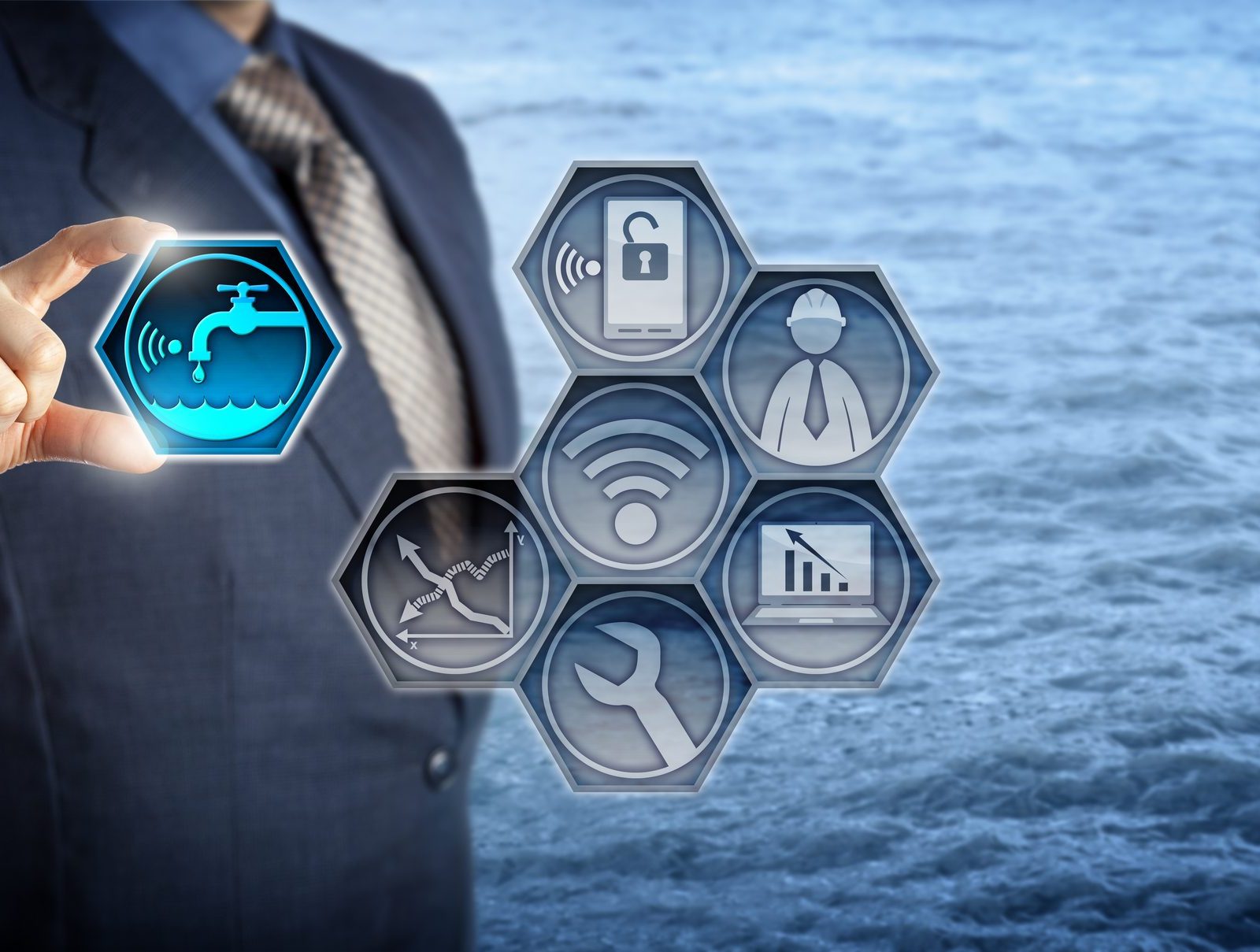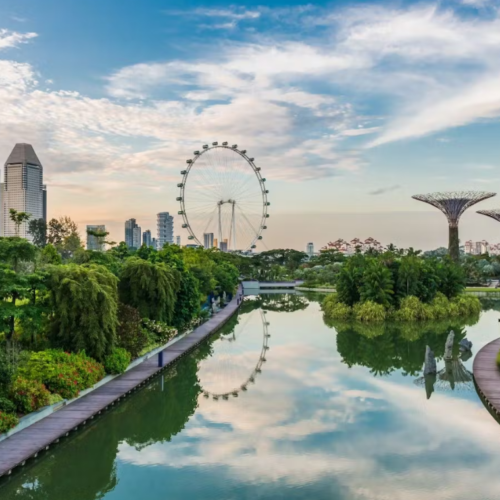Description
The provision of clean drinking water and wastewater treatment are two challenges cities face in the water sector. As clean water is permanently in demand, cities need tools that enable the water system to operate 24/7 and solutions that allow city staff to react dynamically to water issues.
To meet these expectations and better protect the environment, immediate visibility and control of the water system are essential. This can be achieved through smart water management (SWM) solutions. The information and communications technology (ICT) tools used for SWM include digital meters and sensors, Global Information System (GIS) technology, and supervisory control and data acquisition (SCADA) systems.[i] Along with data processing and analysis software, these tools collect, store and automatically analyse real-time data. Digitalisation can also help improve the operational management of complex systems that bring about service improvements and resilience. As different digital components may serve distinct purposes, city governments need to clearly understand their water challenges before introducing SWM.
In practice, most cities set up a steering committee to which a competent agency, such as a water resource agency, reports on project planning and implementation. The committee oversees the whole process and supports the project from a legal and political perspective. The water department or agency’s responsibilities include administering raw water allocation and supervising utility operators in charge of day-to-day operations and technological choices. For example, in South Korea, the Ministry of Land, Infrastructure and Transport is responsible for comprehensive water resources management, while K-water, the state-owned water company, assists local governments in the construction, operation and management of various water development facilities, including SWM solutions.[ii], [iii]
Once they have clarified their goals for the water sector, city governments are ready to select appropriate technological solutions. In water management, service areas are divided into district metered areas (DMAs). Conventionally, the DMAs are divided manually into 1,000-1,500 connections. The introduction of smart sensors and meters facilitates this process. By installing smart devices in the water inlets and outlets of each DMA, these can be subdivided into smaller units, known as sub-DMAs. Operating this way can render more accurate data on water flow, pressure and consumption patterns, for instance. DMAs and sub-DMAs also help identify where there may be leakages. This can then be pinpointed to a higher degree of precision by a leakage crew equipped with acoustic leak detection equipment.
While DMAs have been used for more than 25 years, more and more cities worldwide are adopting satellite leak detection technology, a more innovative and cost-effective way of monitoring the entire water distribution system. Using data collected by satellite-mounted GIS sensors, this technology can detect leaks effectively without significant human or financial investment. For instance, one UK water utility introduced satellite leak detection technology for a 6,000km distribution and trunk mains pipework. It helped prevent leakages of more than 2 million litres per day, seven times more than its original method.[iv]
Another potential application of SWM addresses the issue of groundwater depletion. Management of raw water resources and their replenishment is critical in water-stressed countries, especially when alternative supplies are constrained or more costly. In Handan, China, a groundwater monitoring system consisting of sensors was used to track real-time groundwater levels and control groundwater pumping.[v] Interestingly, the government rolled out smart metering mainly in government-subsidised neighbourhoods, non-residential areas and public water wells to avoid privacy concerns.
In contrast to conventional methods, which rely heavily on water specialists’ empirical knowledge, SWM gives cities integrated water management solutions. Through SCADA systems, data acquired by meters and sensors are linked to a central system for monitoring and facilitating decision making. The SCADA system links remote data acquisition features such as flowmeters to central control functions and decision support systems for monitoring and actionable response.
First, SCADA systems allow city governments to optimise their water supply system remotely. In Seosan, South Korea, the city incorporated the processed data into an automatic remote-control system to adjust the pressure dynamically to mitigate the risk of burst pipes.[vi]
Second, SCADA systems can be used to improve the quality of tap water.[vii] Paju, a Korean city, integrated sensors and a GIS system into the water supply network, allowing the water department to optimise when and where to clean pipes and balance disinfection control.
Furthermore, the SCADA system can optimise wastewater treatment.[viii] For example, in New Taipei City, a pipeline network monitoring system, along with sensors that monitor water volume and water quality, helps control sewage inflow based on rainfall forecasts. The system also provides real-time information on water levels at wastewater pumping stations, allowing staff to react effectively to natural disasters.
Integrating SWM into the existing water infrastructure paves the way for long-term achievements, such as reducing operational costs, improving the revenue-water ratio, securing water resources and even safeguarding public health. Digital platforms can be developed to better communicate data with citizens. In Auckland, New Zealand, the city council regularly publishes information on water quality collected by sensors on an app named Safeswim. It has enabled open dialogue between the city and its citizens about water safety, infrastructural upgrades and cost implications.[ix]
As these examples demonstrate, the right tech solutions contribute to the success of SWM. City governments should also be aware that implementing a smart water plan requires thorough planning and long-term investment.
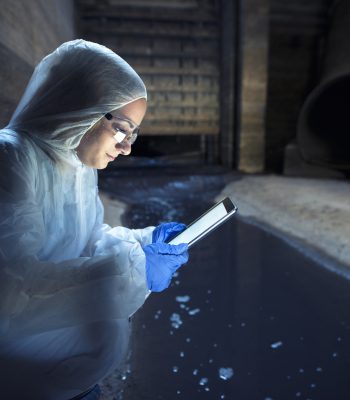
Resource implications and key requirements
Clear goals and vision
SWM does not provide a one-size-fits-all solution to all problems in the water sector. Rather, cities should first identify the problem to be solved and, in an incremental approach, set short- and long-term objectives while assessing how smart water measures might help to achieve their goals.
District metered area
Monitoring water flow in each service area is the first step in reducing leakages or rehabilitating water resources. For example, the Indonesian city of Denpasar adopted the same zoning system to tackle the high level of non-revenue water. After subdividing existing DMAs into more manageable units, the city was able to integrate a real-time monitoring system into pipes and wells at village level, then improve the supply of water, even in the peak tourist season.
Data interoperability
Meters adopted in different periods may have different formats and standards. As a result, it is strongly recommended that cities set a common standard to be followed (ideally the same as at that at national level) in the early stages of project planning. Although the outputs of sensors are standardised, cities may still encounter difficulties if they purchase products from different suppliers. For example, the Chinese city of Handan used the products of multiple metering companies and had the water data sent to their respective servers. The data proved too fragmented and difficult to analyse, and the city needed to negotiate with the companies to acquire their data. Moreover, it also had to purchase additional software at its own expense to extract and process the various data.[x]
Another important issue is that an abundance of data comes with the use of pervasive sensors. Cities ought to set response protocols to decide what information has higher priority – from critical metrics, such as a chlorine monitor fault, to less urgent measures that can wait, say, until the next working day, such as a minor dosing pump fault.
Funding and financial support
It is crucial to understand that SWM is a long-term investment. In practice, most projects require 3-10 years of implementation for cities to fully reap the benefits of smart water technology.[xi] A city needs to provide financial support to set the wheels of the project in motion, secure funds to support research and development, and incentivise the public to adopt smart water solutions. In addition, cities ought to allocate financial and human resources for the upkeep of smart water equipment, such as battery replacement for meters, equipment replacement, systems maintenance, etc.
For example, Seosan incentivised its citizens to adopt smart meters as a priority in its budget. As SWM incurs high costs that would have been passed on to water users, the city government worked with the national government to invest about US$ 40,000 in the form of a drought-prevention fund.[xii] The money was used to subsidise citizens who installed smart meters in their homes.
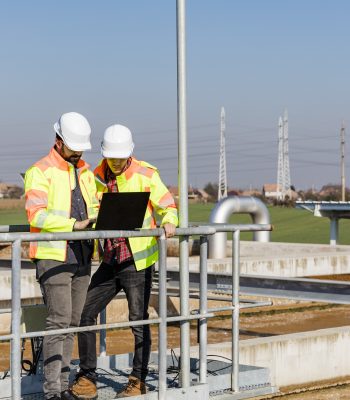
Potential private-sector participation
Private participation in the water sector in developing countries is increasing, with a growing number of governments turning to the private sector to build, recover, expand and/or operate water networks.[xiii] This marks a shift from the traditional models of state-led decision-making to ones where non-state actors, including the private sector, must account for their actions and influences.[xiv]
Public-private partnership (PPP) models have been increasingly adopted in developing countries, and experience has shown that the private sector can help mobilise additional financing, implement investment programmes and improve the overall performance of service delivery.[xv]
Involving the private sector in SWM is, therefore, an effective way of bringing in efficient management skills and additional funds, while at the same time relieving the local government of a fiscal and administrative burden. A report conducted by Megginston and Netter reviewed 61 cases of water privatisation and concluded that privately managed firms were often more productive and profitable than public firms, both in developed and developing countries.[xvi]
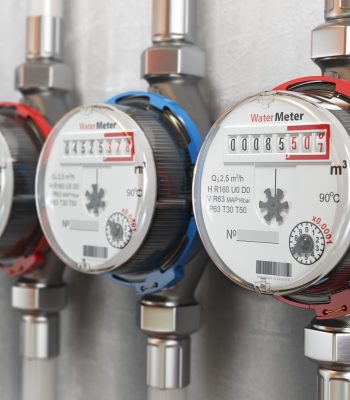
Obstacles to implementation and potential solutions
Concerns as regards SWM relate primarily to smart metering devices. The risks associated with smart metering pertain to data tampering, which could be used to manipulate billing and reveal information on water users’ personal finances and lifestyle, etc.[xvii] Consequently, cities need to introduce clear regulation on data collection (including what data can be captured and stored), data use, data storage and data sharing. In addition, city governments may want to design programmes to educate the public on the importance of SWM and build mutual trust between the public, device suppliers and water network operators.
In addition, when introducing smart meters into households, city governments may need to roll out measures to increase public understanding of the upsides and purposes of SWM. Sharing information openly with the public may contribute to the success of SWM. In Paju, neighbourhoods have been equipped with electric signboards that display real-time information on water quality. Citizens can also use a mobile app to monitor water quality, as well as their water consumption, at any time.[xviii]
As distribution networks become increasingly reliant on connectivity, implementing adequate cybersecurity controls to protect service integrity and consumer data has become increasingly important. To address known cyber vulnerabilities, local governments should work with local energy/water utilities to introduce infrastructure protection standards. Rolling out measures such as systems monitoring, security protocol and restricted access to key terminals and files also helps to mitigate the risks of cyber-attacks.[xix]
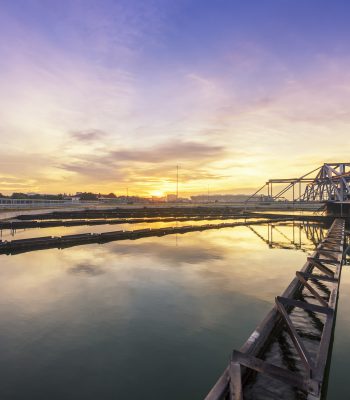
References
[i] J.H. Kim (2019), “What is Smart Water Management?”, Mandaluyong, the Philippines: Development Asia. Available at: https://development.asia/explainer/what-smart-water-management.
[ii] N. Lee (2019), Water Policy and institutions in the Republic of Korea, Mandaluyong, the Philippines: Asian Development Bank. Available at: https://www.adb.org/sites/default/files/publication/517671/adbi-wp985.pdf.
[iii] K-Water and IWRA (2018), Smart Water Management: Case Study Report, Daejeon, South Korea and Paris. Available at: https://www.iwra.org/wp-content/uploads/2018/11/SWM-report-final-web.pdf.
[iv] SUEZ (n.d.), “Satellite Leak Detection”, Maidenhead, UK. Available at: https://www.suez.co.uk/en-gb/our-offering/success-stories/our-references/identify-more-leaks-with-satellite-leak-detection.
[v] K-Water and IWRA (2018), Smart Water Management: Case Study Report, Daejeon, South Korea and Paris. Available at: https://www.iwra.org/wp-content/uploads/2018/11/SWM-report-final-web.pdf.
[vi] H.Y. Kim and D.W. Kang (2020), “South Korea’s experience with smart infrastructure services: smart water management”, Washington, DC: IADB. Available at: https://publications.iadb.org/publications/english/document/South-Koreas-Experience-with-Smart-Infrastructure-Services-Smart-Water-Management.pdf.
[vii] K-Water (2018), “Smart Water Management Application to Paju Smart Water City”, Daejeon, South Korea. Available at: https://www.iwra.org/wp-content/uploads/2018/11/3-SWM-Paju-final.pdf.
[viii] Ecove (2020), “A Case Study of Smart O&M for Water Treatment at Linkou Water Resource Recycling Center”, Taipei City. Available at: http://www.ecove.com/e-newsletter/?l=EN&no=012&cat=key-technology&article=01.
[ix] Auckland Council (n.d.), “What’s is Safeswim’s water quality advices based on?” Auckland. Available at: https://www.safeswim.org.nz/faq.
[x] K-Water and IWRA (2018), Smart Water Management: Case Study Report, Daejeon, South Korea and Paris. Available at: https://www.iwra.org/wp-content/uploads/2018/11/SWM-report-final-web.pdf..
[xi] Ibid.
[xii] H.Y. Kim and D.W. Kang (2020), “South Korea’s experience with smart infrastructure services: smart water management”, Washington, DC: IADB. Available at: https://publications.iadb.org/publications/english/document/South-Koreas-Experience-with-Smart-Infrastructure-Services-Smart-Water-Management.pdf.
[xiii] C. Mandri-Perrot and D. Stiggers (2013), Public Private Partnerhips in the Water Sector: Innovation and Financial Sustainability, London: IWA. Available at: https://www.iwapublishing.com/books/9781843393207/public-private-partnerships-water-sector.
[xiv] J. Williams (2015), “Water flows towards money: The private sector and water governance”, Global Water Forum, 18 May. Available at: https://globalwaterforum.org/2015/05/18/water-flows-towards-money-the-private-sector-and-water-governance/#:~:text=The%20private%20sector%20is%20playing%20an%20increasing%20role,influences%20of%20non-state%20actors%2C%20including%20the%20private%20sector.
[xv] Ibid.
[xvi] W.L. Megginson and J.M. Netter (2001), “From State to Market: A Survey of Empirical Studies on Privatization”, Journal of Economic Literature, 39(2): 321-389. Available at: https://papers.ssrn.com/sol3/papers.cfm?abstract_id=262311.
[xvii] T. Zabkowski and K. Gajowniczek (2013), “Smart Metering and Data Privacy Issues.” Available at: https://www.researchgate.net/publication/264235247_SMART_METERING_AND_DATA_PRIVACY_ISSUES.
[xviii] K-Water (2018), Smart Water Management Application to Paju Smart Water City, Daejeon, South Korea Available at: https://www.iwra.org/wp-content/uploads/2018/11/3-SWM-Paju-final.pdf.
[xix] LEAP, PTI and US Department of Energy (2013), “Cyber Security Concerns for Local Government Energy Assurance Planning”. Available at: https://www.cadmusgroup.com/wp-content/uploads/2013/03/Mark-Lesiw-coc-2011-handout2.pdf.








